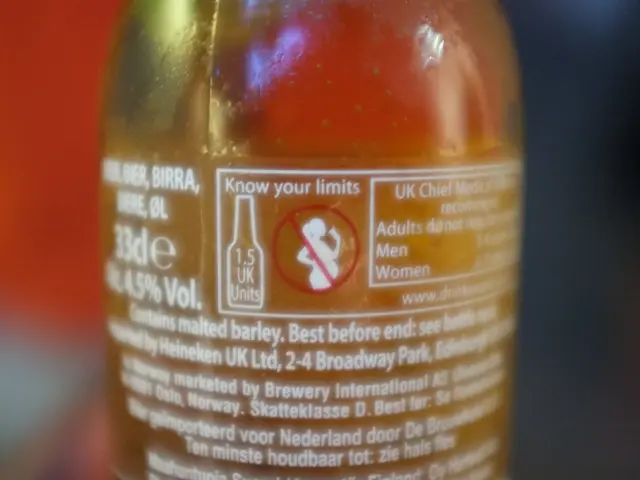Pharmaceutical Company Halozyme Therapeutics Encountering Turmoil
A Fresh Look at Halozyme Therapeutics (NASDAQ:HALO)
Three months ago, I took a gander at Halozyme Therapeutics, a drug delivery powerhouse. Recent developments demand a fresh analysis. This particular biopharma has been on a rollercoaster ride recently, plunging 25% on May 13, 2025, due to persistent fears that the Centers for Medicare & Medicaid Services (CMS) might reset the price negotiation timeline for combination therapies. Let's delve into all the juicy details.
Halozyme Therapeutics, a San Diego-based biopharmaceutical juggernaut, specializes in enhancing existing therapies using its unique Enhanze subcutaneous drug delivery technology. Since its inception in 1998, it went public via a reverse merger in 2004, starting its life as a publicly-traded company at $4.25 a share. As of today, its shares trade around $54.00, valuing the company at a robust $6.65 billion.
The Enhanze technology serves as Halozyme's secret sauce, breaking down the primary hyaluronan component in the subcutaneous space, allowing for improved absorption of large and small molecules previously reliant on intravenous infusions. The temporary neutralization of hyaluronan owes to the technology's transitory, 30-minute half-life, recovering in the subcutaneous space within two days. Halozyme delivers its technology via a pressure-assisted auto-injector, making therapy administration a breeze for millions of patients. These enhancements have streamlined the delivery of multiple therapies, revolutionizing the quality of life for countless patients.
Enhanze plays a crucial role in three blockbuster therapies—Johnson & Johnson's (JNJ) multiple myeloma treatment Darzalex Faspro, Roche's (OTCQX:RHHBY) HER2+ breast cancer therapy Phesgo, and argenx's (ARGX) generalized myasthenia gravis medication Vyvgart Hytrulo. Darzalex Faspro reigns supreme among these treatments, accounting for an astonishing $11 billion in sales in 2024.
Looking ahead, the IV and subcutaneous editions of therapies like Roche's Ocrevus (Zunovo), Tecentriq (Hybreza), Bristol Myers Squibb's (BMY) Opdivo (Qvantig), and Johnson & Johnson's Rybrevant (SC), are set to rake in $28 billion combined by 2028 in sales. The licenses for these seven therapies will guarantee Halozyme a considerable payday, at least through 2030, and in some cases, even into 2040. As of FY24, royalties and milestones from Halozyme's licenses accounted for an impressive 70% of its top line.
The remaining revenue for Halozyme comes from sales of its own products, with testosterone replacement therapy Xyosted and bulk sales of rHuPH20 making up the majority. In FY24, its products accounted for revenues of $303.5 million.
It's worth mentioning that Halozyme is embroiled in several proceedings against Merck (MRK). The most notable of these is a patent infringement lawsuit regarding a subcutaneous form of Keytruda, a lawsuit that could drag on for several years as it's set to receive FDA approval in September 2025. With an enhanced delivery version of the world's best-selling drug expected to account for roughly half of the company's sales by 2028, this litigation demands careful monitoring. This week, there was an update on this patent litigation from the U.S. Patent and Trademark Office.
In a nutshell, Halozyme generated $4.23 in earnings per share (non-GAAP), $632 million in Adjusted EBITDA, and a whopping $1.015 billion in revenue in FY24, representing gains of 53%, 48%, and 22%, respectively, over FY23.
Halozyme's shares have weathered stormy seas, buoyed by a steady stream of royalty income from various sources, a predictable earnings outlook, and a vague ever-present possibility of further expansion.
Over the past seven months, this scenario has unfolded as expected, with shares of HALO experiencing two significant dips. The first, in November 2024, followed news of Halozyme's interest in German pharmaceutical concern Evotec (EVO). The proposed $2 billion deal would have stirred up shorting activity from arbitragers, or introduced additional debt if the deal was all-cash, while also introducing the high-risk realm of drug development. Ultimately, management scrapped the pursuit of Evotec, and it took three months for Halozyme's stock price to recover.
The second significant drop resulted from the announcement of the CMS's proposal to open price negotiations for combination drugs.
In early May 2025, Halozyme reported 1Q25 financials on May 6th, boasting earnings of $1.11 per share (non-GAAP) and Adjusted EBITDA of $162.0 million, against $0.79 per share (non-GAAP) and Adjusted EBITDA of $115.7 million on revenue of $195.9 million for 1Q24, representing impressive gains of 41%, 40%, and 35%, respectively. The quarter unlocked solid growth for Halozyme, with revenue increasing by 39% and royalty revenue hitting $168.2 million. The stock surged 18% to an all-time high of $70.14 in the following trading session—classic live chat action on The Biotech Forum.
In conclusion, while the CMS proposal presents a real and significant risk to Halozyme's hyaluronidase-based combination biologics, impacting revenue-producing timelines starting in 2028, the company remains on track to net close to $20 per share during FY25-FY27, boasting gross margins in the low-to-mid 80 percent range. At a PE ratio of 8.2 on FY26E EPS, the stock's valuation remains reasonable, with a narrow trading range expected. The recent financial performance has been robust, and the pending FDA approval of an enhanced delivery version of Keytruda adds intrigue. Despite the uncertainty, buying the dip in shares of HALO might yield handsome rewards in the short term, especially with the appealing options market for added protection. If you're eager to learn more about these trading opportunities, don't be shy—start your free trial to The Biotech Forum by clicking HERE and join our lively discussions in real-time.
- The rollercoaster ride of Halozyme Therapeutics, a biopharmaceutical company specializing in technology-driven drug delivery, has been influenced by developments in both the medical-conditions and health-and-wellness sectors, as well as finance and investing, due to its partnerships with prominent companies like Johnson & Johnson, Roche, and argenx.
- Halozyme Therapeutics' unique Enhanze technology, a pioneer in subcutaneous drug delivery, has generated significant revenue for the company and has played a vital role in enhancements for multiple blockbuster therapies, like Johnson & Johnson's Darzalex Faspro and Roche's Phesgo.
- In addition to its technology licensing and royalty-generating business model, Halozyme Therapeutics also sells its own products, such as testosterone replacement therapy Xyosted and bulk sales of rHuPH20, contributing to its revenue stream.
- The company's future prospects are not without challenges, as Halozyme Therapeutics is embroiled in litigation with Merck regarding the subcutaneous form of Keytruda, a lawsuit that could significantly impact the company's earnings in future years. The outcome of this patent infringement case demands careful monitoring for investors and stakeholders interested in the business and technology sectors, as well as health-and-wellness and finance.







